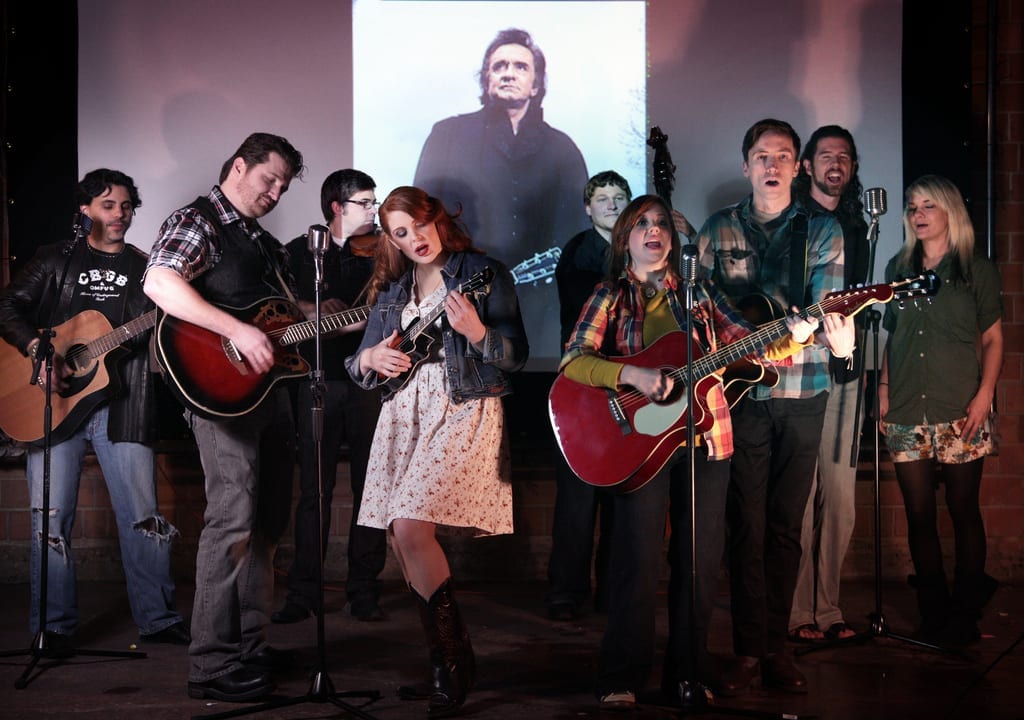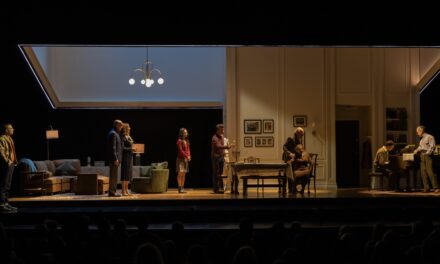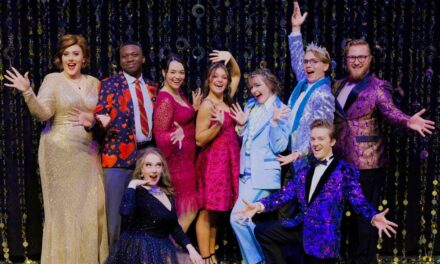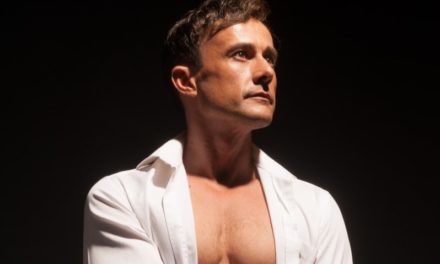PARK CITY — When you attend the Egyptian Theatre, you can expect a show as unique as the theater itself. Nestled on Main Street in Park City, the theater’s surroundings are just as quaint as the pharaoh-style design on the inside. In its 85th year, the Egyptian Theatre is in gorgeous condition today. While this has it advantages—a quaint atmosphere, for example—it also has its drawbacks. The seats are quite close together, with little legroom. And because the seats are not offset, if a particularly tall patron chooses a seat in from of you, your view of the stage will be limited. But it’s all part of the experience.
Their latest production, Ring of Fire, was no exception to the uniqueness that is the Egpytian. Before we proceed, I must admit that I am not much of a Johnny Cash fan. It’s not that I don’t like his music per se; I’m just not very familiar with it. With this knowledge, you may ask, rightfully so, why I would choose to attend a performance featuring only his music if I knew just two of his songs. To that I would answer that it is worth giving new things a try, for you never know how it will affect you.
Dark Horse Company Theatre’s Ring of Fire certainly struck a chord with me and gave me a new perspective of the country legend. Featuring more than 30 Johnny Cash songs, the show tells the story of the singer and gives a deeper look at the man behind the music. Starting with his childhood, the play portrays the different phases of his life—his upbringing, family-ties, hard work, adversity, and faith.
In the program director Willie Richardson wrote, “Everyone knows at least one song by Johnny Cash . . . though he is now gone, his music continues on with us here and now . . . the circle remains unbroken as the music of Johnny Cash finds its voice in all of us.” With this theme in mind, it is easier to understand the style of the show. Instead of a typical musical with set characters, Ring of Fire is presented as a narrative, with each of the actors taking turns portraying the singer. This style was new to me, however, and I spent the first 10 minutes with my jaw slightly agape as my mind grappled to piece it all together.
But once the shock wore off, the pieces fit together quite snugly and true to the director’s notes, the show provided an emotion-packed glimpse into the life of the legend. There were no costume or scene changes, but rather the actors directly addressed the audience as they told his story and gave life to his music.
As each of the seven main actors took turns personifying Johnny Cash, they each brought something unique to the table. They took turns singing solos, duets or group numbers, but their musical talents didn’t end there. They all joined the live band and collectively played the guitar, harmonica, banjo, piano, ukulele, tambourine, trumpet, washboard and chains. Ginger Bess, who played Johnny Cash’s mother during the first act, had a strong, clear voice and brought a wide range of emotions to the stage, especially during her rendition of “Waiting on the Far Side Banks of Jordan.” Jenessa Bowen, who sometimes depicted Johnny or a sibling, also had strong vocals and was very charismatic. She nearly singlehandedly drew the audience into the show with her enthusiasm. For most of the performance Jyllian Petrie, another Johnny Cash stand-in, appeared uncomfortable on the stage and did not bring the energy of the others. But in the second act she seemed to open up and gave an energetic performance of “Tear-Stained Letter.”
The men’s voices blended together so well that it was difficult to pick out one from the other, but their solos gave each male actor a chance to shine. Austin Archer really got into character, dancing across the stage and playing his harmonica during “Tennessee Flat-Top Box.” Christopher Glade put a great deal of emotion behind his numbers, giving the appropriate weight behind numbers like “Folsom Prison Blues,” and adding a lighthearted side while singing “Delia’s Gone” with a twinkle in his eye. Daniel Simons gave the Man in Black a proper tribute with a rousing rendition of “A Boy Named Sue,” complete with comedic comments to the audience. Ricky Parkinson’s voice, however, stood out because of his incredibly broad–not to mention low–range. His deep bass-baritone voice was reminiscent to that of Johnny Cash himself. Along with the musical cast, one must give credit to the musicians who made up the live band. Adam Overacker played the upright bass, Mason Aeschbacher was on the drums, and Brandon Bushman contributed greatly to the ambiance as he played his fiddle.
Thanks to the design of Arika Schockmel, the set helped to depict the time. The back wall of the stage was transformed as pictures and videos from a projector flashed by, changing with the stages of his life. It was incredibly moving to hear “Ring of Fire” while watching pictures slide by of Johnny Cash and his new bride, June Carter. It gave the song a whole new meaning for me.
The show covered the different stages in the life of Johnny Cash from his hardworking, soulful childhood and whirlwind marriage to his years of prison and drug abuse. These scenes contained strong thematic material and language, which may not be suitable for children. The show was also just over two hours, which proved difficult for me to stay focused and would be nearly impossible for a child.
I was extremely skeptical of a show consisting almost entirely of music, but much to my surprise, I found myself drawn into the story and I even sang along with the two songs I know. I was also pleased to discover quite a few little treasures such as “Flushed from the Bathroom of Your Heart,” “While I’ve Got it on My Mind,” “If I were a Carpenter,” and “I Still Miss Someone.” These new discoveries just might make their way onto my iPod.
Altogether it was a powerful performance—thought provoking, enlightening, and emotional. If you are a Johnny Cash fan, this show will give you a new perspective and a deeper look at the legend. But if not, go ahead and give it a try—you might be surprised at what you find and you may even walk away with a new favorite song or two.







